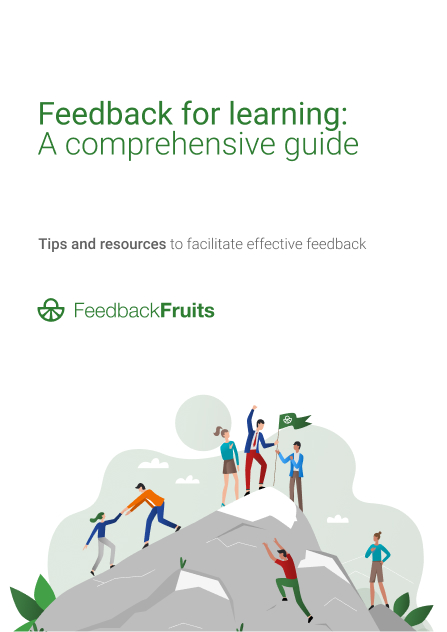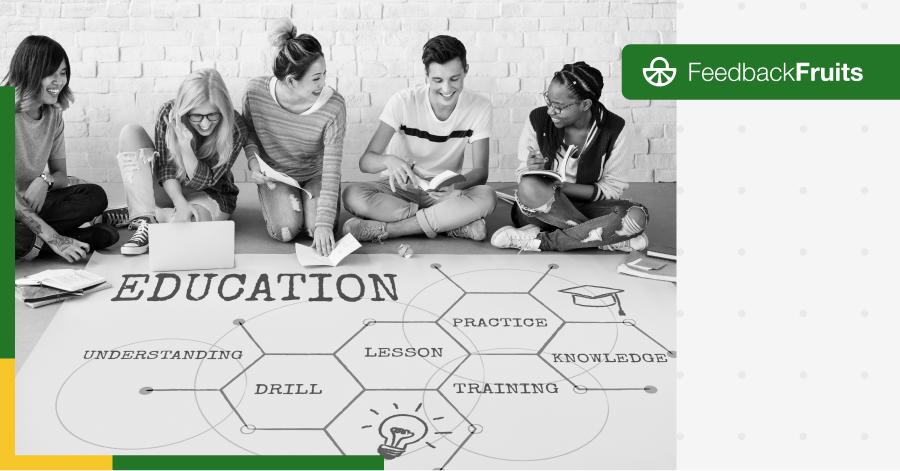Whichever occupation or career path we may end up following, it’s more than likely that working in a team will make up a major part of the job. The skills required to do this effectively are broad, and many: think collaboration, communication, leadership and listening, to name just a few. However, for a significant proportion of students going through education, the very idea of group work causes disinterest and frustration. Instead of seeing it as a chance to develop these vital lifelong skills, it is met with anxieties about unfair work distribution, free-riding, and a lack of transparency and accountability. Not to mention, many students are simply not used to giving and receiving feedback from their peers, leading to superficial and non-constructive feedback.
Educators today have not only the normal burden of setting up group projects, but must also maintain oversight on processes and dynamics online and at a distance. This means all the usual work of a teacher, plus the technological challenge of setting up group activities for success. However, when the correct starting conditions are in place, technology can fulfill its intended purpose and help to streamline, automate, and provide visibility on the fundamental elements of a successful group activity.
So how can educators set up group work and peer evaluation activities for the best chances of meeting the intended learning outcomes? In this article, we want to make sure you know how to use the most game-changing features in our Group Member Evaluation tool to increase student autonomy and ensure minimal extra workload, all while keeping on top of everything going on with the groups in your courses.
Our team started this series with the hope of helping educators make the best out of our tools and create engaging, meaningful learning experiences.

What if there was a way to automate part of the process of guiding good feedback practices? Ideally, teachers should always set a good example with what constructive feedback looks like, and we recommend using the instructions to do just this. Even consider linking external resources on how to give peer feedback if you think students would find it helpful! But we know this takes extra time and effort which isn't always available in large quantities. That's why the feedback writing tips feature was developed - with the collaboration of IE business school - to give that extra bit of support without it affecting your workload. Check out this article to see how it works.
.png)
Figure 1. Feedback coach
How do you know whether students have taken onboard the learning that you intended? With online and distance learning contexts, knowing what’s going on with each learner’s journey can be an ambiguous undertaking. With a reflection however, you can encourage students to take responsibility for their learning and objectives. You also gain insight into the attainment of these learning objectives by seeing if students have highlighted the same points you may have noticed throughout their work. In this way, a reflection step can take work away from teachers as learning trajectories can be quickly checked by scanning these submissions, rather than setting up individual consultations. And of course, thorough instructions in this step can go a long way toward guiding deeper reflections from your students.
In FeedbackFruits activities, students always see a progress bar displaying their percentage completion of any activity. This not only acts as a nudge to finish all the necessary steps, but also highlights if extra work is required from the student, such as leaving extra review comments or starting original discussions. When grading is enabled as an element here, students are even further encouraged to complete every step of the activity, including parts they may see as ‘less important’, such as that final reflection. Transparency in grade weighting gives students a clear picture of what is expected and what is being assessed in the activity - so be sure to configure grades to reflect what you find most important. For example, if you want to encourage participation but minimize the anxiety of getting things wrong, you could set grading up to reward students for answering questions, but not assign points to answering them correctly. This communicates that you want students to try, and that it doesn’t matter if they make mistakes, which after all, is how learning works.
Read more: How does configurable grading work?
.png)
Figure 2. Configurable grading.
Faculties often work with standardized rubrics whereby the same criteria are used between different teachers in a course, or even between different courses. These latter are sometimes called “global learning outcomes”, and are often repeated throughout various stages in a program. To make the process of setting up rubrics as simple as possible, it is possible to export rubrics and share them as csv or excel files, making it easy to confer between faculty members and align on assessment criteria as they are adapted and evolved. You can also use ‘copy from existing’ to reuse rubric templates which your institution has collated.
.png)
Figure 3. Rubrics sharing
With the review ratings option, you can enable students to give an extra step of feedback within the evaluation process. Has a student received an abnormally low or high rating on a criterion that they might disagree with? This feature allows them to instantaneously evaluate the score they received with both a 1-10 scale and an optional space for clarification with a comment. This score evaluation option also allows you as a teacher to quickly scan whether students agree or disagree with the feedback they’ve received, allowing you to make a better judgment about the dynamics of your peer evaluation activity.
The shift in culture starts with functional spaces for growth and learning. Make sure your intended learning outcomes match with the activity parameters and learning flows you enable, and change your role from a giver of tasks to a facilitator of learning. Our extensive Group Member Evaluation use cases catalog may be a good source of inspiration if you’re wondering how our partners have configured the tool for success across different disciplines and contexts. Or if you’d rather listen than read, check out our podcast with Omid Noroozi and Kazem Banihashem of Wageningen University, who carried out research into peer evaluations using these tools.
Did you enjoy this article and would you like to read more tips and suggestions on using our tools? Type "FeedbackFruits Tips" in the search bar to explore our other resources.

Explore how to best implement active learning strategies with deep understanding of different modalities

FeedbackFruits announces partnerships with many institutions worldwide over the past 4 months

An overview of the state of competency-based education (CBE) in higher education around the world